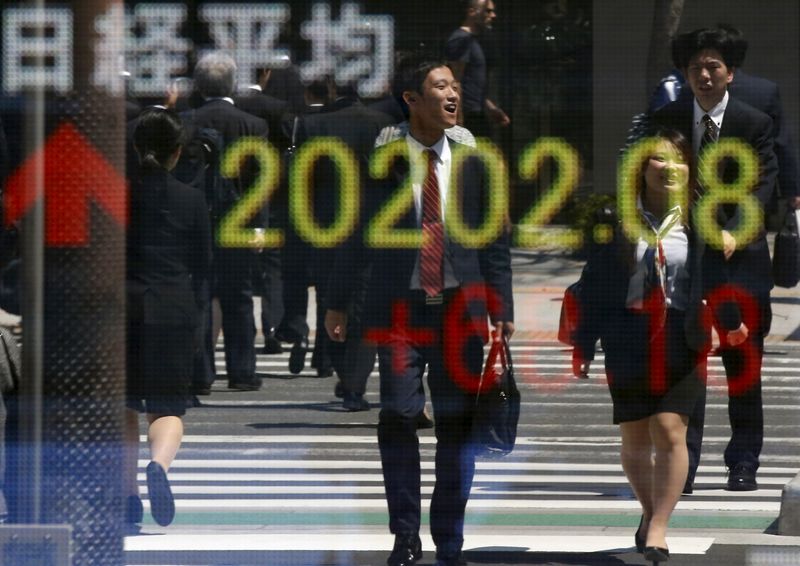By Gina Lee
Investing.com – Asia-Pacific stocks were up on Friday morning, with U.S. futures also climbing higher as a measure of calm returned to markets. However, concerns of an economic slowdown and China’s ongoing COVID-19 outbreaks could lead to more volatility.
Japan’s Nikkei 225 was up 0.84% by 10:11 PM ET (2:11 AM GMT). The consumer price index (CPI) n.s.a. grew 0.4% month-on-month in April 2022, while the national core CPI grew 2.1% and the national CPI grew 2.5% year-on-year.
South Korea’s KOSPI rose 1.46% and in Australia, the ASX 200 rose 0.94%.
Hong Kong’s Hang Seng Index jumped 1.51%.
China’s Shanghai Composite was up 0.70% and the Shenzhen Component rose 1.20%. The People’s Bank of China held the one-year loan prime rate (LPR) at 3.7%, while cutting the five-year LPR to 4.45% from the previous month’s 4.6%.
Regional shares mostly shrugged off modest losses in their U.S. counterparts on Thursday, while European contracts also made gains. Sovereign bonds mostly held a rally, with the U.S. 10-year Treasury yield at 2.85% and the dollar trimming its biggest one-day drop since 2020.
COVID-19 lockdowns in China continue to impact economic growth, according to a Bloomberg survey. Shanghai found three COVID-19 cases outside quarantine, which raises questions on whether authorities will go ahead with plans to ease a lockdown in the city. The offshore yuan fell.
Concerns over an imminent economic downturn continue, due in part to the U.S. Federal Reserve hiking interest rates to curb high inflation. Global shares are now set for a historic seventh week of declines.
Equities were having a “rough” patch, according to Kansas City Fed President Esther George, but she did nothing to soften the U.S. central bank’s hawkish tone.
“Inflationary pressures look very much persistent at the moment,” BNY Mellon Investment Management senior market strategist Lale Akoner told Bloomberg.
“The biggest risk right now is developed-market central banks might trigger a recession. We are increasingly suspecting that they made a policy mistake.”
Investors also digested a higher-than-expected number of weekly initial jobless claims, which stood at 218,000 according to Thursday’s data. The Philadelphia Fed manufacturing index for May 2022 was 2.6, much lower than the 16 predicted in forecasts prepared by Investing.com and the previous month’s 17.6 figure.
Elsewhere, the war in Ukraine, perpetrated by Russia’s invasion on Feb. 24, continues. The U.S. Senate on Thursday passed an aid package totaling more than $40 billion for Ukraine, with the bill now on President Joe Biden’s desk for his signature.
However, China is looking to stock up its strategic crude stockpiles with cheap Russian oil, a potential sign that it is strengthening its energy ties with Russia as the European Union works toward implementing sanctions on Russian imports in response to the war.
Investors in the U.S. are bracing for more volatility later in the day due to the monthly expiration of options tied to equities and exchange-traded funds.
